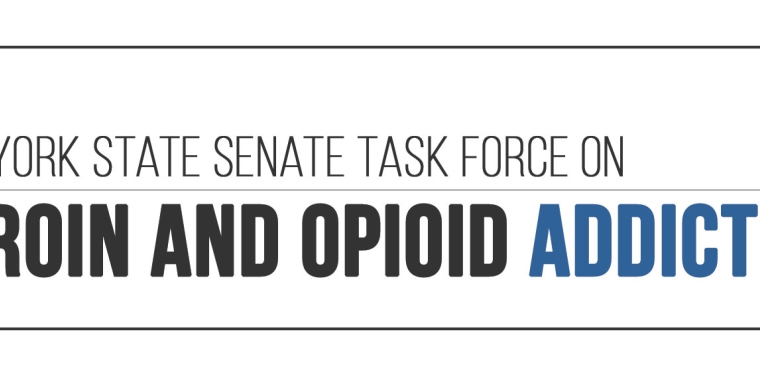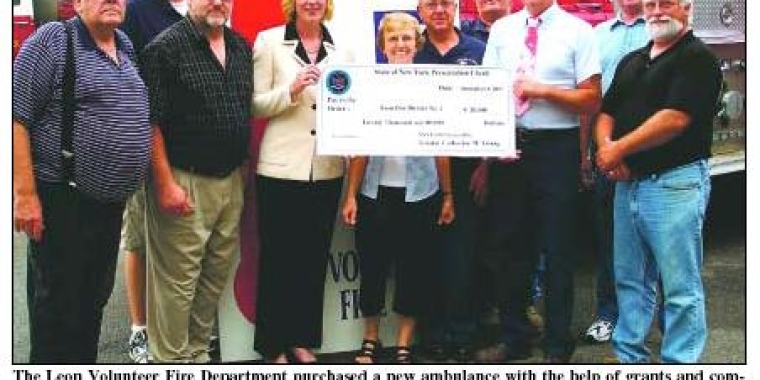
Senator Cathy Young and the Seneca Nation of Indians Join Together to Fight Heroin and Opioid Addiction
Catharine Young
June 4, 2014

For Release: Immediate, June 4, 2014
Forum in Irving Tackles Addiction Treatment and Prevention
IRVING - Make no mistake - the heroin and opioid epidemic has hit Western New York. Families across the state and nation have been devastated by the deadly effects of addiction, and communities in Chautauqua County, Cattaraugus County, the Seneca territories, and the entire surrounding region have not been exempt from the negative impact.
Recognizing the gravity of the epidemic and the reality of widespread heroin and opioid abuse, today, Seneca Nation President Barry E. Snyder Sr. and Tribal Councillors Jeffrey Gill (Cattaraugus), Richard Nephew (Cattaraugus), Darlene Miller (Allegany), and Arlene Bova (Allegany) join New York State Senators Catharine Young (R,C,I - Olean), Phil Boyle (R,C,I - Suffolk County), Patrick Gallivan (R,C,I - Elma), and George Maziarz (R,C - Newfane) in co-hosting an historic joint forum to address the heroin and opioid addiction epidemic in our communities. Chautauqua County Executive Vince Horrigan will also join the panel of elected representatives in attendance.
At the joint forum, the impact of this epidemic is being told not just through statistics, which are shocking enough themselves, but also through the harrowing testimonies and stories of recovering addicts and their families, for whom heroin and opioid addiction is a daily personal struggle.
“Today’s forum has brought together concerned and affected citizens from across the region to deal with this epidemic. It also marks the first time that state and tribal governments have joined forces and held an official joint effort,” said Senator Young. “Because the scourge of heroin abuse in our communities has grown to such overwhelming levels, we recognized that we need to work together on finding effective solutions. Families are being destroyed at an alarming rate and the personal testimonies we are hearing today reveal in heart-wrenching detail the real-world impact of heroin and opioid abuse.”
Senator Phil Boyle, who chairs the New York State Senate’s Joint Task Force on Heroin and Opioid Addiction, said, “The current heroin and opioid epidemic has touched untold lives and brought immeasurable suffering to New Yorkers. The efforts of our Heroin Task Force are yielding historic results in the fight to combat this addiction crisis in our state and will save countless lives.”
Seneca Nation President Barry E. Snyder Sr. stated, “This is an historic event. The New York State Senate and Seneca Nation leadership understand that the drug issue knows no boundaries, and we welcome the State’s task force to our Territory to work together towards a common goal.”
Today, at the Cattaraugus Community Center in Irving, New York, elected officials are gathering with law enforcement; treatment providers; experts in the fields of education, mental health, and substance abuse; and other affected individuals who have been directly influenced by heroin and opioid abuse. Forum participants will address the many aspects of the heroin and opioid epidemic, including addiction treatment and prevention, drug-related criminal activity, and other negative social impacts in order to determine meaningful solutions to help those in need.
The deadly effects of heroin and the extent of the problem in recent years has been felt by individuals throughout our society, from law enforcement to emergency medical treatment providers, and from education professionals to addiction recovery providers, as well as individual citizens from across the socioeconomic spectrum.
At the national level, recent figures from the National Survey on Drug Use and Health (NSDUH) detailed the reported abuse of heroin between 2007 and 2012, finding that the number of heroin addicts nearly doubled nationwide over this short time. About 669,000 Americans were reportedly using heroin in 2012. The number of first-time users was particularly alarming, increasing from 90,000 in 2006 to 156,000 in 2012.[1]
Ours is one of the most severely affected states, with New York accounting for about 20 percent of the heroin seized by the federal Drug Enforcement Administration (DEA) every year. The rate of these seizures in New York has grown by 67 percent over the last five years alone.[2]
Also, as reported by Attorney General Eric Schneiderman, opioid and heroin overdoses in New York killed twice as many people in 2011 as in 2004. The number of people in New York who died as a result of opioid and heroin overdoses climbed to more than 2,000 in 2011.[3]
These increases in abuse, drug seizures, and overdoses statewide is especially evidenced in New York’s rural counties, where drug arrests have increased significantly over the last ten years, including in Chautauqua and Cattaraugus Counties.
According to figures from the New York State Division of Criminal Justice Services (DCJS) examining the last ten years, in 2013 there were 209 felony and misdemeanor drug arrests in Cattaraugus County, more than in any of the previous nine years. In the years prior, between 2004 and 2012, there was an annual average of 135 drug arrests per year in the county.[4]
As reported by the Post-Journal, Chautauqua County also experienced an increase in felony and misdemeanor drug arrests last year. At 399, drug arrests were up from an average of 359 over the previous nine years. In Jamestown, the number of drug arrests relating specifically to heroin increased dramatically, from just nine in 2011 to 27 in 2013.[5]
Coinciding with this increased activity in the area of law enforcement, emergency medical service personnel and first responders have also seen the impact of increased abuse. In the period between August 2012 and March 2014, the Olean Times Herald reported that ambulance crews from the Olean Fire Department responded to 15 reported critical overdoses as a result of opiate abuse. Of these 15 overdoses, 11 were reportedly caused by heroin.[6] In 2013, Jamestown’s Mental Health Association found that heroin was linked to more deaths than any other drug.[7]
Avi Israel, President and Founder of Save the Michaels of the World, Inc. lost his son to prescription painkiller addiction. He now works to raise awareness of prescription drug addiction. “I am very grateful to Senator Young, Senator Boyle, and the members of the task force for trying to find solutions to this epidemic. Our family has paid the ultimate price, the loss of our son Michael. This forum and others like it can help save many Michaels from losing their lives,” he said.
Laura Elliott-Engel, Executive Director of the Council on Addiction Recovery Services, Inc. (CAReS) in Olean, New York, said, “There are 23 million Americans in recovery. While a chronic disease that impacts many families with loved ones, there is effective treatment and pathways to recovery. The Senate’s attention to the significant increase in opioid experimentation and usage is a powerful statement that there are solutions that can be imagined and incorporated into an effective public response through increased funding for prevention services in our school systems, investment in community recovery support services, and strengthening our treatment services to respond to the significant risk and availability of opioids.”
Silver Creek Central Schools Superintendent Dan Ljiljanich gave his perspective on the role of schools in combating the crisis. “One of our top priorities as a school community is providing positive outlets for our students. Thus, we will continue to focus our energy on increasing co-curricular participation in student clubs, music programs, and athletic activities. Young people will always find something to occupy their time, and it is our responsibility to provide constructive opportunities and strongly encourage participation in activities that will steer them away from drugs,” he said.
Combating this epidemic has also required increased attention and resources for law enforcement. Cattaraugus County Sheriff Timothy Whitcomb said, “As I enter my second term as Sheriff in Cattaraugus County, I have seen firsthand in five years the drastic increase in heroin and opioid abuse in both our criminal investigations and in our incarcerated inmates.”
Senator Young said, “I look forward to today’s testimonies and the tremendously important discussions we are having. I thank everyone who has come out today and know that by working together in a cooperative way, we can enact meaningful solutions that will help prevent many families and individuals from having to experience the terrible impact of addiction.”
###
[1] http://www.drugabuse.gov/publications/research-reports/heroin/scope-heroin-use-in-united-states
[2] http://online.wsj.com/article/AP36f450b5899e4a9b8cf38971f1579784.html
[3] http://www.ag.ny.gov/press-release/ag-schneiderman-unveils-statewide-cop-program-equip-and-train-every-new-york-law
[4] http://www.criminaljustice.ny.gov/crimnet/ojsa/stats.htm
[5] http://www.post-journal.com/page/content.detail/id/631988.html
[6] http://www.oleantimesherald.com/news/here_and_now/article_39f9d266-a54f-11e3-af7c-0019bb2963f4.html
[7] http://www.post-journal.com/page/content.detail/id/634218/Community-Must-Join-Drug-Abuse-Battle.html
Share this Article or Press Release
Newsroom
Go to NewsroomJamestown Post-journal - Sue Ann Fish
September 24, 2007

Senator Young Joins "Circle of Friends"
September 19, 2007
Senator Young Announces Funding for The Heritage Group
September 7, 2007